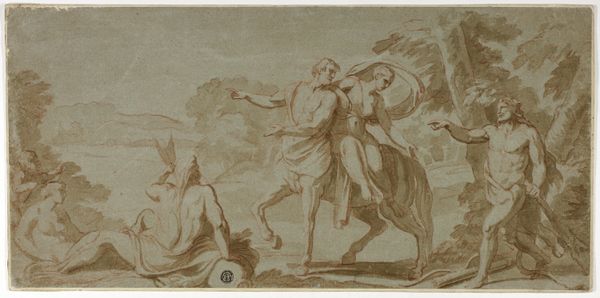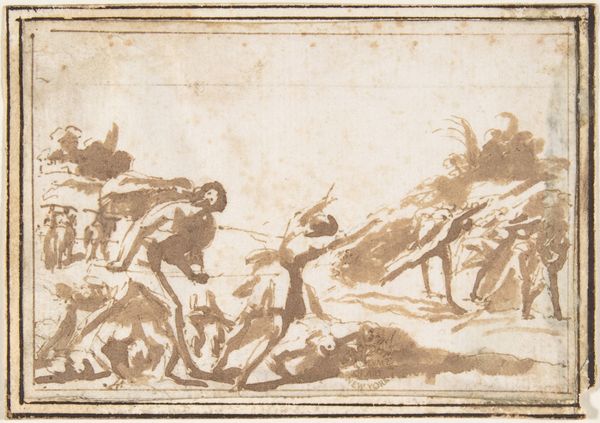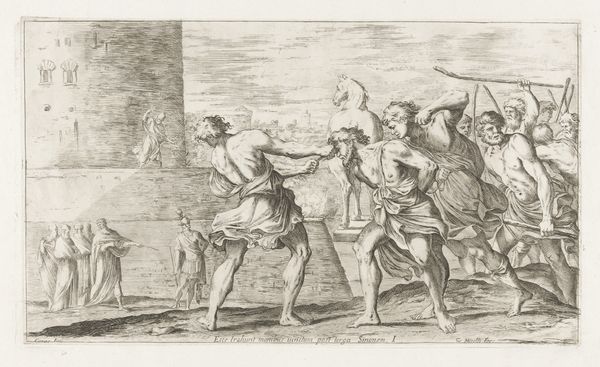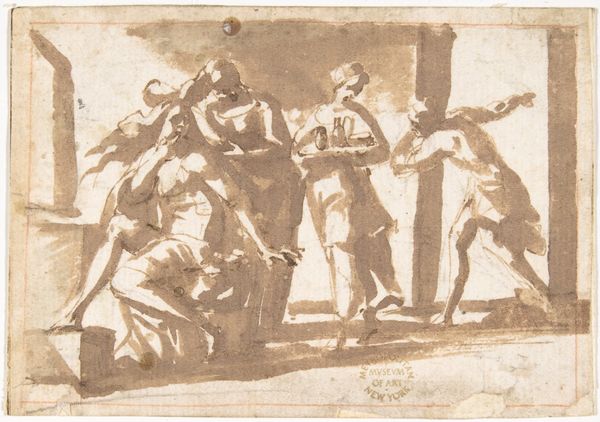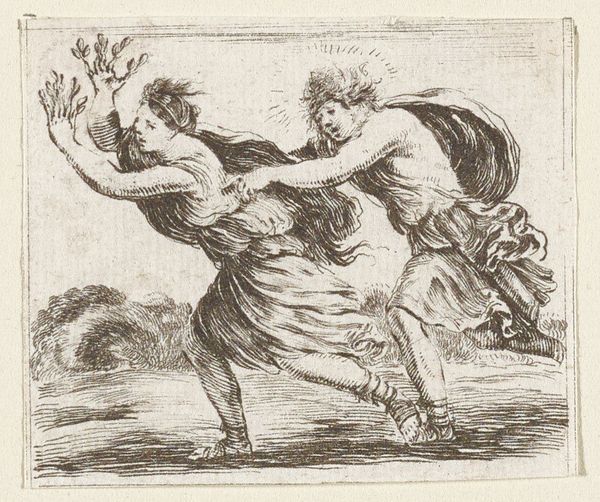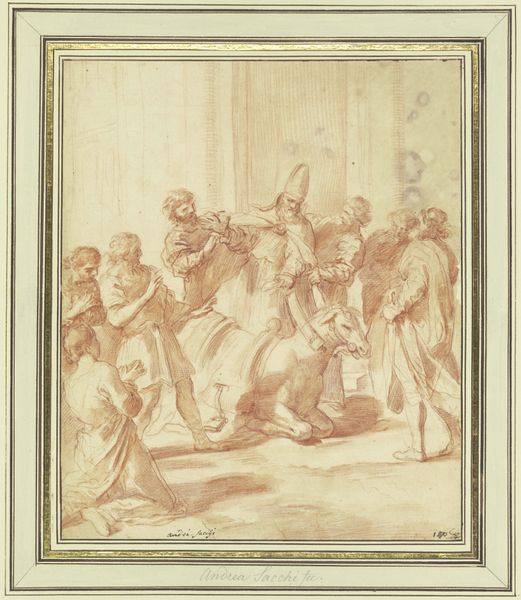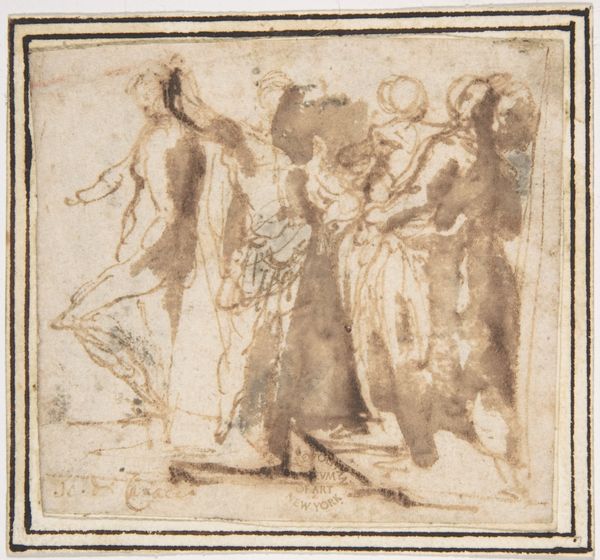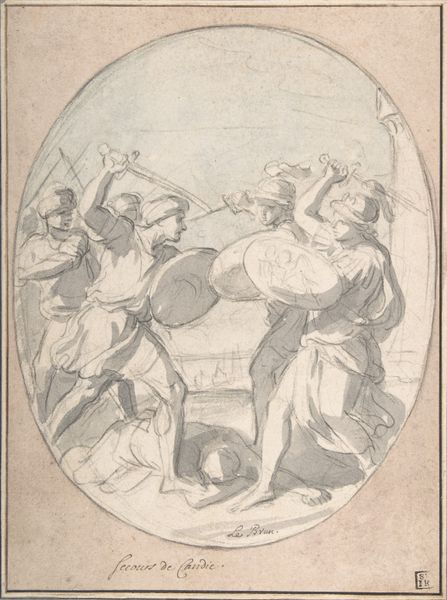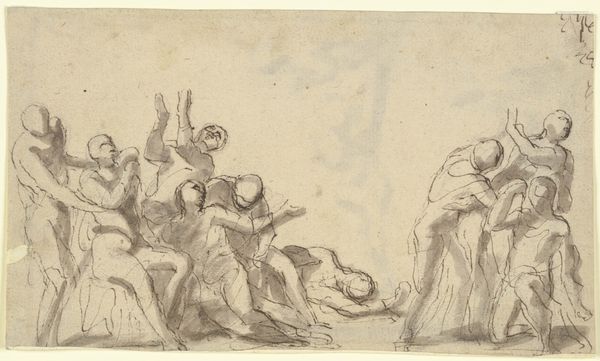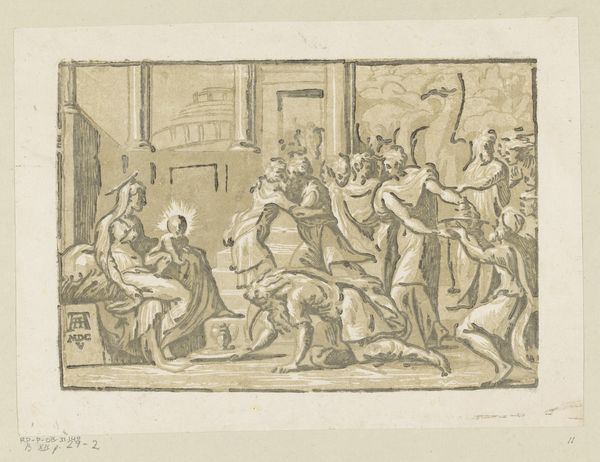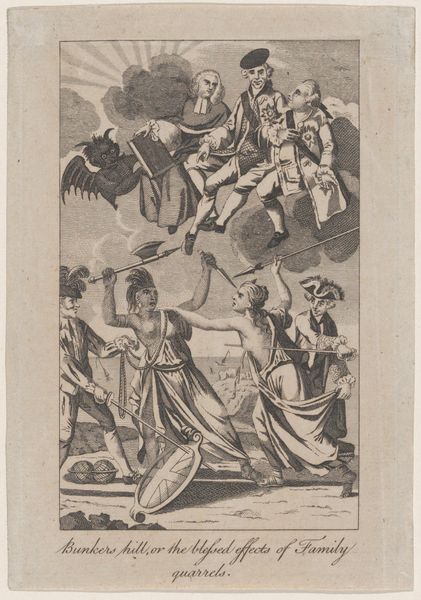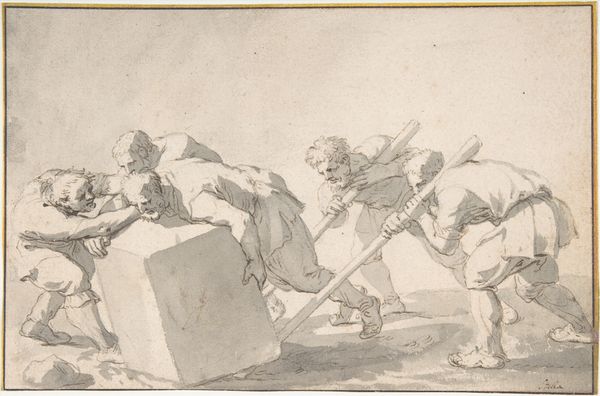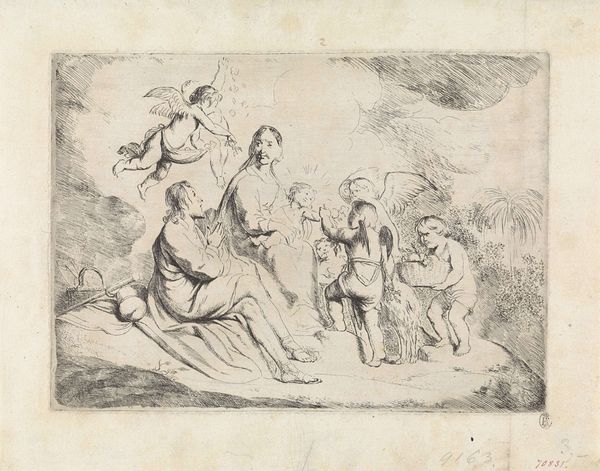
drawing, print, ink
#
drawing
#
baroque
# print
#
etching
#
figuration
#
ink
#
history-painting
Dimensions: 3 7/8 x 6 3/4in. (9.8 x 17.1cm)
Copyright: Public Domain
Editor: Here we have "The Death of Lucretia?" a drawing, likely from between 1624 and 1663, by Francesco Allegrini. The flurry of frantic energy really grabs you. It makes you wonder, what terrible event happened right before this snapshot in time? What's your take on it? Curator: Ah, Lucretia! What a potent image of turmoil frozen in time! You know, looking at this frantic scene, I am transported. I sense the hot-blooded intensity, the desperate grasping – all that swirling energy makes me imagine a tragic opera. The way Allegri teases out form with such sparse, expressive strokes – see how each line dances with the unfolding drama. I can almost hear the collective gasp of horrified witnesses! Doesn't it remind you of a Caravaggio, that high-stakes baroque sensibility distilled down into pure linear force? What about that ladder? Where do you imagine it leads? Editor: Good point – I didn't even see the ladder at first! It’s so faint, like an escape route that maybe isn't one at all? The theatrical nature feels heightened with the figure climbing away as the drama unfolds, it definitely brings a lot more narrative context to it. It gives the piece a sense of multiple points of view. Curator: Precisely! We are left to wonder if escape is even possible! That's baroque storytelling at its best, layering moral ambiguity on raw, unforgettable feeling. You know, maybe it's not just about historical accuracy, but the resonance of trauma and escape. It mirrors a part of ourselves when confronted with something impossible. Editor: That’s fascinating, it makes the artwork really linger in my mind. Thanks for pointing that out. Curator: Anytime! Always remember art is less about definitive answers, but what possibilities it creates for you.
Comments
No comments
Be the first to comment and join the conversation on the ultimate creative platform.
